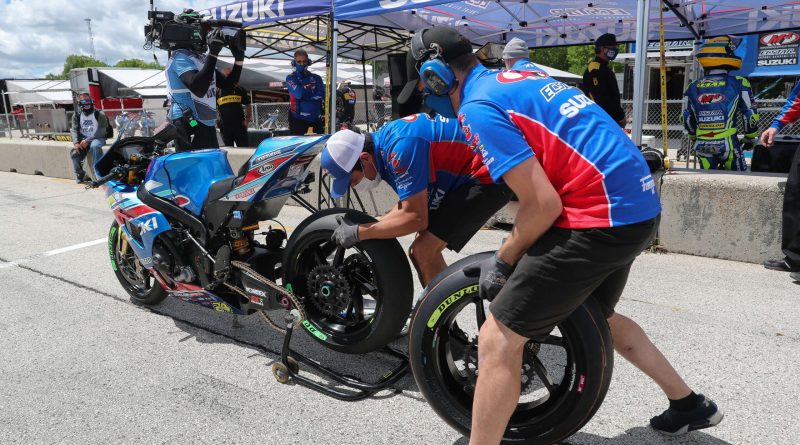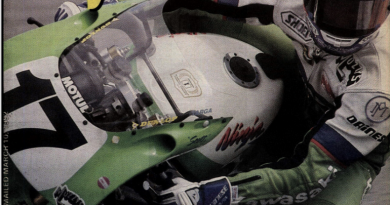Tech Tuesday: Fast & Precise

I finally replaced my kitchen faucet over the weekend. I purchased the new unit about a month ago, and the box sat on the counter in the kitchen while I pondered the eventual task. As usual, my wife asked me one or three times, “When are you going to replace that faucet?” Ironically, in the time I was “preparing” for the job, the old faucet had transformed from a perfectly functioning, albeit lime- and scale-encrusted apparatus, to a leaky old relic.
“Hey, the faucet’s leaking.”
“Well, what do you know, I happen to have a replacement faucet…right here.”

The instruction booklet that came with the faucet indicated that it should take me about two hours to complete the job. I knew right then that it would be a two-day ordeal for me. Furthermore, the list of tools required were two adjustable wrenches, a pair of pipe pliers, and a Phillips screwdriver. That’s why I went out in the garage to retrieve all those tools, plus a 1/4″ ratchet and sockets, a 3/8″ ratchet and sockets, all manner of socket extensions, a strap wrench, a roll of teflon tape, a pair of diagonal cutters, a tape measure, and a flashlight.
Step one: turn off the water. Easy peasy, thanks to the stainless steel, 1/4-turn ball valves I had installed the last time I replaced the faucet. 30 seconds elapsed. Step two: remove the old faucet. The unit was secured to our granite countertop by a large ring nut underneath the counter and behind the sink. And the ring nut was locked in place by two dreaded Phillips-head set screws.
I quickly discovered that I needed to have hands the size of an infant and arms that are six-feet long, double-jointed, and with wrists that rotate freely in every direction, plus be able to compress my entire body into roughly the size of a motorcycle fuel tank in order fit below the sink and reach up behind the double-basin composite sink to access the ring nut and set screws. Thank goodness I brought those socket extensions, ratchets, and sockets in from the garage. After about an hour, I had the set screws loosened, the ring nut removed, and the old faucet extracted from the hole on the countertop in the back of the sink.
And so, the process went through the rest of Saturday afternoon as well as through the better part of Sunday. The result was a brand-new, electronic, motion-activated kitchen faucet with extendable spray wand. A perfect installation with supply lines and power cables neatly routed and secured with zip-ties, the area beneath the sink freshly cleaned, and a job well-done.
Throughout the installation process, I thought about the talented technicians and crew members in our paddock. In their race shops and in the paddock or at pit wall on race weekends, they complete much more complicated tasks than replacing a kitchen faucet, and they do so in mere fractions of the time. More importantly, they do those tasks with absolute precision.
I am slow and precise; they are fast and precise. In my world, I can only do one or the other. In their world, they have to do both.

Whether it’s rebuilding a bike that cartwheeled into the airfence during qualifying and getting it to the starting grid in time to make the race a couple of hours later, replacing a clutch pack or brake pads, or my personal favorite, changing a rear tire along pit wall, the MotoAmerica crews do tasks over and over again with repeatable precision and speed that always leaves me in awe.
In the time it would take me to look up the torque setting on a rear axle bolt and set my torque wrench to the proper pound-feet (or Newton-meters), they’ve got the axle nut off, axle out, rear wheel and tire out, new rear wheel and tire in, axle in, and axle nut retightened usually not by a torque wrench but by a spinner handle and socket because those guys are so good they know the proper torque by feel alone.

I’ve talked to a lot of crew members in the paddock, and many of them say they are “OCD.” I can relate because I was diagnosed with Obsessive Compulsive Disorder a long time ago. I don’t consider it a disorder because it’s what makes me a freakishly good proofreader (not bragging, fact). Unfortunately, though, it’s also why every slotted screw in every light switch wall plate in my house is oriented vertically (straight up and down in line with the switch toggles). And, it’s why it takes me two days to replace a kitchen faucet.
Those crew members in the paddock may very well be OCD, but they are also G-O-O-D at their jobs. Damn good, in fact, and the riders, team owners—heck, all of us—appreciate it immensely even though we may not express our appreciation.
Wait a minute, I just did.
To purchase tickets for all MotoAmerica events, click HERE
For information on how to watch the MotoAmerica Series, click HERE
For the full 2021 MotoAmerica Series schedule, click HERE



